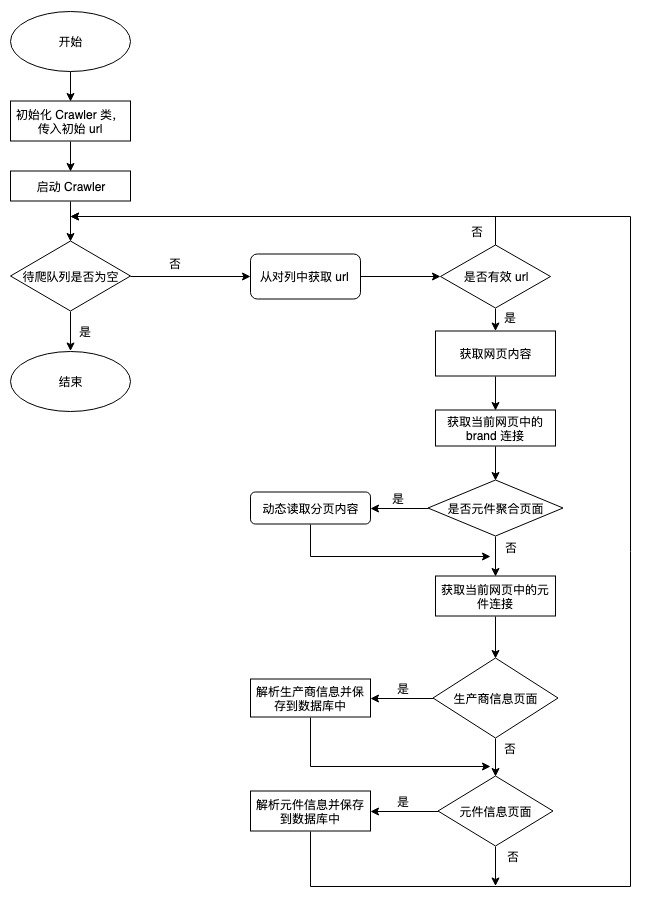外行学 python 爬虫 第八篇 功能优化
keinYe 完成于

.
在前一篇中讲了如何开启多线程来加快爬虫的爬取速度,本节主要对爬虫爬取内容机型优化,将生产商信息单独独立出来作为一张数据库表,不再仅仅是存储一个生产商的名称,同时保存了生产商的网址和介绍。
解析生产商信息
针对生产商页面的信息的解析方法请参考 外行学 Python 爬虫 第三篇 内容解析,在这里我们只需要按照相同的方法解析出生产商名称、网址、简介等信息即可,生产商数据表内容如下:
class Brands(Base, CRUDMixin):
__tablename__ = 'brands'
id = Column(Integer, primary_key=True, autoincrement=True)
name = Column(String(100), nullable=False, unique=True)
url = Column(String(100))
desc = Column(Text)
materials = relationship('Materials', backref='brands')
在完成数据表和网页信息解析相关的内容后,我们需要将生产商页面的 url 加入爬虫的有效 url 中,在整个程序中使用正则表达式来判断一个 url 是否是一个有效的 url,正则表达式的规则如下:
r'https?://(www|list|item).szlcsc.com(/(catalog|brand))?(/[0-9]*)?.html'
在 python 使用 re 模块来处理正则表达式
该表达式可以过滤出一下网址:
'https://www.szlcsc.com/catalog.html'
'https://list.szlcsc.com/catalog/542.html'
'https://item.szlcsc.com/22931.html'
'https://www.szlcsc.com/brand.html'
'https://list.szlcsc.com/brand/11442.html'
以上网址包含了元件目录、元件列表、元件详情、生产商列表、生产商详情等页面。
一下 url 校验的函数,函数接收正则表达式和 url 两个参数
def check_url(self, regex, url):
if regex is None or url is None:
return False
if re.match(regex, url) is None:
return False
return True
由于元件信息和生产商信息相互关联,且一个生产商可以对应多个元件,因此需要先获取生产商的信息,在获取网页中的 url 时,需要先对生产商的 url 进行识别,然后在识别元件的 url,相关的函数如下:
def __find_url(self, current_url, html):
for link in html.find_all(name='a', href=re.compile(REGEX_EXP_BRAND_LIST)):
url = link.get('href')
if not self.url_in_bloomfilter(url):
if Crawler.url_queue.qsize() < Crawler.max_url_count:
self.url_add_bloomfilter(url)
Crawler.url_queue.put(url)
if self.check_url(REGEX_EXP_CATLOG_LIST, current_url):
if Crawler.url_queue.qsize() > Crawler.max_url_count:
Crawler.url_queue.put(current_url)
else:
self.get_product_item_url(current_url)
for link in html.find_all(name='a', href=re.compile(REGEX_EXP_ALL)):
url = link.get('href')
if not self.url_in_bloomfilter(url):
if Crawler.url_queue.qsize() < Crawler.max_url_count:
self.url_add_bloomfilter(url)
Crawler.url_queue.put(url)
整个程序的执行流程

真个程序执行后,在数据库中可以看到生产商、元件信息、元件价格等三张数据表,后面可以对着三个表的数据进行分析。



Comments